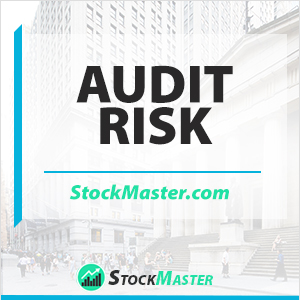 What Is Audit Risk?
What Is Audit Risk?
Definition: Audit risk is the uncertainty that an auditor might issue an unqualified opinion when there is a material misstatement in the financial statements.
Creditors, shareholders, and stakeholders rely on financial statements to make informed decisions when it comes to investments. Often issued quarterly, financial statements provide insights into the financial health of a company or business. Public companies are required by law to have independent audit firms audit their books of accounts from time to time. In the process of preparing the financial statements, irregularities often occur, leading to what is termed as audit risk.
Audit risk is a term used to depict materially incorrect financial statements. Such statements cannot be relied upon to provide an accurate depiction of the financial health of a company or a business. While an audit process is supposed to ensure audit risk is appropriately low through testing and sufficient evidence, sometimes that is never the case. In such scenarios, the financial statements are deemed materially incorrect and cannot be relied upon to make informed business decisions.
Auditors are required by law to make inquiries and carry out tests in the general ledger and supporting documentation to ensure the final financial statements are as accurate as they can be. Any errors detected during the testing process must be corrected before the statements are issued to the public.
Financial statements with high levels of audit risk carry legal liability to the firm that carried out the audit work. For this reason, audit firms try to cover their tracks and protect themselves from potential legal liability by taking out a malpractice insurance cover.
Audit Risk Formula
Audit risks, which are simply errors in financial statements, arise from two primary sources, clients, and auditors themselves. Likewise, there are three different types of audit risks: Inherent Risks, Control Risks, and Detection Risks.
Clients control inherent and control risks while auditors control detection risks. The audit risk formula is calculated like this:
Audi risk = Inherent Risk X Control Risk X Detection Risk
Types of Audit Risk
Inherent Risks
Inherent risks refer to errors in financial statements those companies’ internal auditors or financial officers cannot detect. Such audit risks arise due to error or omission in the preparation of financial statements.
The inherent risk may also be because of the complexity of financial statements and tends to be high whenever there is involvement of top human judgment. To detect and prevent such risks, companies must have in place a series of procedures for identifying problems.
Detection Risk
Detection risk is a type of error in a financial statement that arises due to poor planning. Whenever commercial teams are preparing statements, there is a likelihood of them gathering information erroneously, consequently missing information or relying on faulty mathematics. The error may also be caused by the auditor failing to find a material misstatement in the financial statements.
To prevent such errors, financial teams must a high degree of knowledge about the company as well as it’s industry and business.
Control Risk
Control risk is a type of audit risk that tries to ascertain the accuracy of the numbers as reported by employees. The risk may arise due to internal control mechanisms failing to protect significant error or misstatement in the financial statements.
Companies do find themselves in trouble, relying on inaccurate numbers as reported by employees. Companies must have an internal control mechanism adequate for detecting and preventing incorrect data that may lead to fraud and error. Such errors may also arise due to the absence of collapse a relevant control.
Audit Risk Example and Application
Auditors examine inherently and control risks in a bid to gain a clear understanding of the company as well as the environment they are dealing with. Whenever control and inherent risks are high, auditors try to ensure detection risk is set as low as possible to acceptable levels.
By increasing the audit sample size, auditors can lower detection risk. Likewise, whenever control and inherent risks are low, detection risk must be set relatively high.
Similarly, to avoid all three types of audit risks, several components must be dealt with. For starters, intense planning and strategizing in every department and every process of auditing must come into play. Likewise, financial teams must exercise proper internal control over financial reporting.
